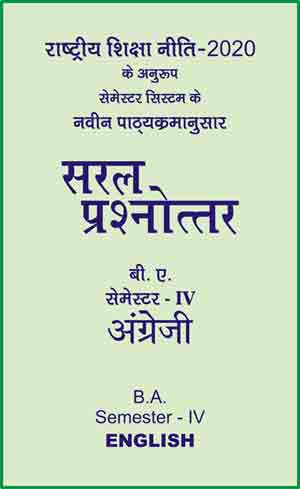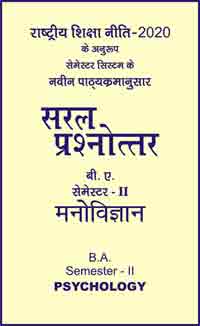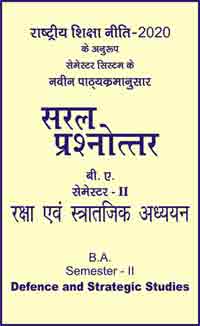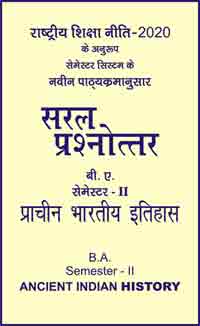|
बी ए - एम ए >> बीए सेमेस्टर-4 अंग्रेजी बीए सेमेस्टर-4 अंग्रेजीसरल प्रश्नोत्तर समूह
|
5 पाठक हैं |
|||||||
बीए सेमेस्टर-4 अंग्रेजी - सरल प्रश्नोत्तर
Unit-VII
Chapter - 12
Translation Practice
(Hindi to English)
Brief Introduction
Hindi is the mother tongue of at least 405 million people around the world. Whereas, English is the most commonly spoken language after Mandarin, Hindi is the largest spoken language in India, especially in the Northern Indian States. Because, English is the language of International Reputation. So, those Hindi native speakers find it quite common to get themselves in a situation to write something in English but without required skills in the non-native language they are incompetent. But, now they can use our Hindi to English Translator.
In the old times when we need to translate a document from one language to others, It was prerequisite to have knowledge of grammar, syntax, and linguistics. Now, all you need to do is type in Hindi language column even when you don't know Hindi Devanagari keyboard layout, just type in English Roman phonetically similar Script as long as you want, press translate button and within a fraction of second, you can see your text translated in the English language.
There are several techniques that are commonly used for translating from Hindi to English:
1. Word-for-word translation : This involves translating each word in the source text individually, without considering the overall context or structure of the sentence. This can result in translations that are awkward or difficult to understand.
2. Literal translation : This involves translating the source text as closely as possible to the original meaning, while still trying to maintain the structure and grammar of the target language. This can be a more accurate translation than word-for-word translation, but it can still result in awkward or unnatural-sounding translations.
3. Free translation : This involves translating the source text in a way that is natural and easy to understand in the target language, without being too concerned about preserving the exact wording or structure of the source text. This can result in translations that are more fluid and easier to read, but may not be as faithful to the original meaning.
4. Translation by a human translator : This involves having a professional human translator translate the source text into the target language. Human translators are able to consider the context and intended meaning of the source text and produce a translation that is accurate and reads naturally in the target language.
5. Translation using machine translation software : This involves using a computer program to translate the source text into the target language. While machine translation software has improved significantly in recent years, it is still not as accurate as human translation, and it can produce translations that are awkward or contain errors.
Hindi to English Translation
Now as you translate, you may feel certain points where you need to improve, or you feel like you can't translate it satisfactorily. So, here are 5 ways in which you can improve your translation skills:
1. Read
Read, read and read more. Reading is not just good for vocabulary, comprehension, and learning context, it will also help you find the different ways in which sentences are structured.
Make note of how words and phrases are used, and how ideas are shared in different contexts. Note the tone of the writer and what they are trying to express.
As you read, try and make summaries of the articles or pieces you like. That way you will be able to practice understanding tone, context, ideas, and how to express the same idea differently- all in one go!
Make sure to keep translating as you read. Underline sentences that you find difficult to translate and make notes. Ask about these sentences later from teachers or on online forums. You'll find many that will help you.
2. Write
It is essential to connect the words you read to a medium- whether written or typed. Writing your translations as you translate helps in a number of ways:
Improves your ability to comprehend and translate mentally.
It also improves your ability to express that translation in written form.
Speaking aloud as you write is a great way to check whether what you wrote makes sense or not.
So make it a habit to write as you read and translate.
3. Vice-Versa
It is important, no vital even, to learn how to translate both ways. Sticking to translating, say, English to Hindi will cause you to be out of touch with translating Hindi to English. To make a plan, for every English to Hindi Translation, to a Hindi-to-English one. This way you will get great practice in translating both ways. It will also greatly improve your flow.
4. CAT - Computer-Aided Translation
The internet has a number of tools for translation. The most famous translation tool is Google translate. You can use these to translate sentences or words you aren't sure of. But don't make it a habit to use computer tools! Use these as helpful resources.
5. Converse
Sometimes reading, writing and even the internet may fail in providing you help (though the internet usually succeeds). So also make it a habit to converse with people in the languages that you translate. So talk to people who are good in English in English and the same with people who are great at Hindi.
Conclusion
That brings us to the conclusion. Of course, the biggest way to improve your translation skills is to practice, practice and practice. That is the only way you will be able to know the language better. Both the one you are translating to and translating from. Reading, writing, and talking will always enhance your understanding of language. After all, language is a basic means of communication.
Important Facts to Remember
The translation profession began more than 2,000 years ago. Starting with the Old Testament being translated into Greek in the middle of the third century BC, the translation industry has grown extensively through the years. With the industry expected to reach 2 billion by the end of this year, it has clearly come a long way since that first translation.
Translation has played a key role in the dissemination of scientific information. As an example, an eighteenth-century physicist, Gabrielle Emilie Le Tonnelier de Breteuil marquise du Châtelet, first translated Isaac Newton's law of universal gravitation into French.
The six languages that are the most difficult for English speakers to learn are Mandarin Chinese, Arabic, Polish, Russian, Turkish, and Danish. Interestingly, Mandarin is also the most commonly used language worldwide; however, its tonal nature makes it exceptionally nuanced, and there is a large number of characters to memorize. Because of some of the difficulties, it is especially important to contract with a professional translation company to work on translation projects that involve these languages.
The top three most translated autuors worldwide are Agatha Christie, Jules Verne, and William Shakespeare, according to the United Nations Educational, Scientific and Cultural Organization (UNESCO). Professional translation services play a tremendous role in helping authors reach international markets.
This might not come as a surprise, but The Holy Bible is considered the most translated text of all time, with parts of it being translated into 3,384 languages. The original Hebrew, Aramaic, and Greek writings contain approximately 611,000 words.
When people think of the most translated content, they likely are thinking about books; however, it turns out that songs can also be widely translated. The song "Golden Dreams of Gandhijii" was recorded in 125 languages by Indian artist Dr. Kesiraju Srinivas.
Perhaps a little known fact about translators is that they have been responsible for creating some alphabets. For instance, Janme Evans invented Cree syllabics, which are used to write the most widely spoken Indigenous language in Canada. Additionally, the Cyrillic alphabet, used today to write Serbian, Bulgarian, and Russian, along with several other languages, emerged from the work of Saints Cyril and Methodius.
People might not think of languages as endangered, but approximately 40% of the world's languages fall into that category; some of those languages have fewer than 1,000 people still using them.
Even though there are 7,139 languages in the world, more than half of the world's population speak only 23 languages. A certified translation services provider should be able to provide assistance with almost any language pair, whether they are endangered or more widely used.
There is no official language of the United States. Although English is the most commonly spoken one in the country, it is not listed as official. After English, Spanish is the second most spoken language in the U.S.
|
|||||














